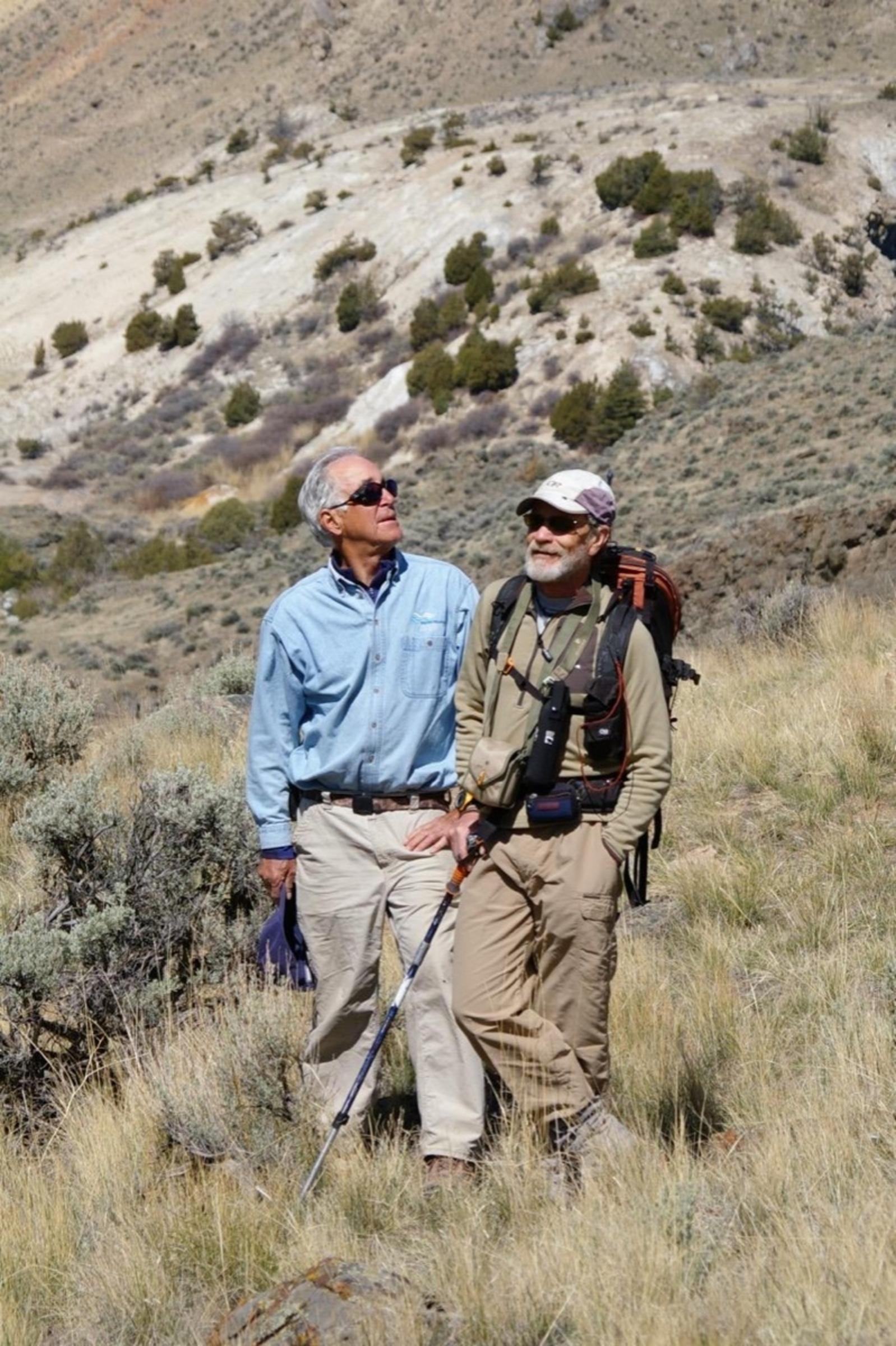Gilbert and friend, retired Forest Service entomologist Jesse Logan who is an expert in identifying the correlation between rising average temperatures and the loss of whitebark pine to outbreaks of mountain bark beetles, drought, and fire on top of a pathogen called blister rust. Whitebark pine produce nutritious nuts in their cones that grizzlies love to eat and help keep them healthy. But whitebark pine have rapidly disappeared, causing grizzlies to seek other sources of food putting them in conflict with people. Here, Gilbert and Logan hike along the Yellowstone River corridor looking for bears. Photo courtesy Barrie Gilbert

